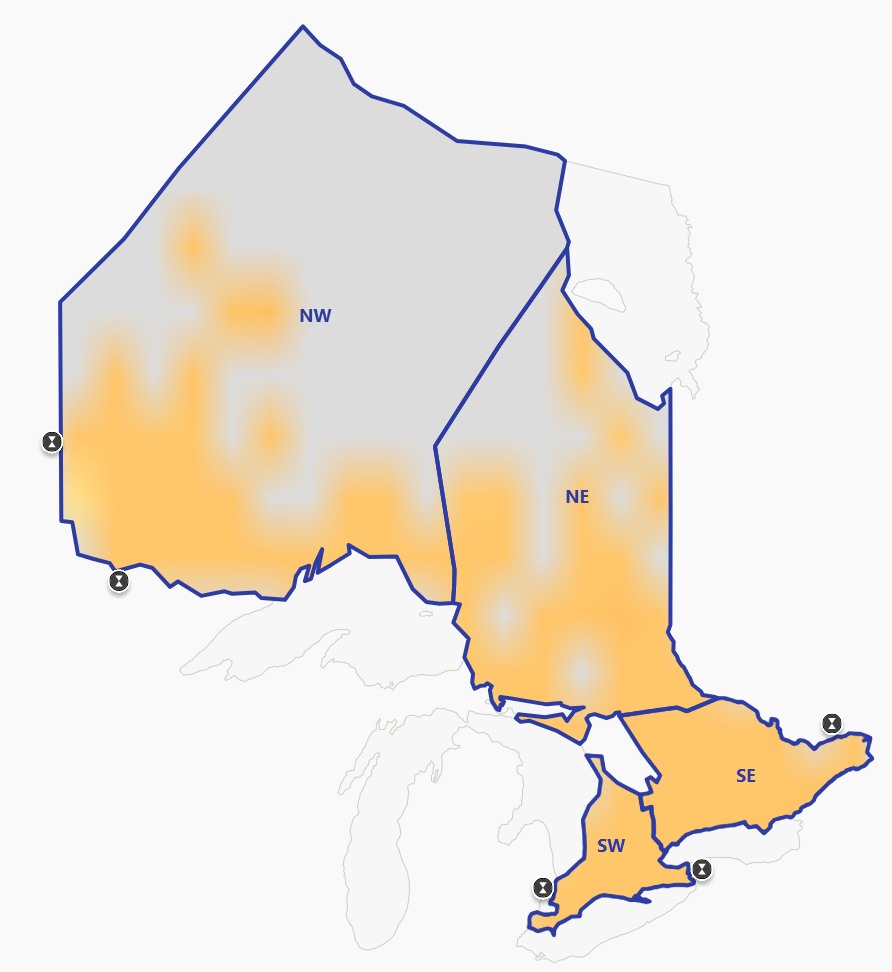Demand Forecasts
At the heart of the IESO’s operations lies the critical task of demand forecasting — a process that is essential to maintaining the reliability and security of Ontario’s power grid while also optimizing the economic efficiency of the electricity market.
With the introduction of locational marginal prices and a financially-binding day-ahead market, the IESO has enhanced its demand forecasting capability by transitioning to a more refined four-zone forecast. It has expanded the network of weather stations and incorporated additional weather variables into forecasting models to achieve greater accuracy and granularity. These enhancements will help ensure economic efficiency in the market and properly balance supply and demand in all market timeframes.

These four areas are combinations of the IESO’s existing 10 electrical zones based on complementary characteristics. This four-zone forecast is published in chart form on the Market Data page as well as in csv in the Adequacy Report - multiple times during the day for the Dispatch Day (Day 0) and for the Day-Ahead (Day 1). It is also published twice a day for Days 2 to 34.
Demand Forecast Areas - Location and Size
| Demand Forecast Area | Electrical Zones contained | Average Hourly Demand (MW) for 2022-2023 | % of Total System Load (2022-2023) |
|---|---|---|---|
| Northwest | Northwest | 527 | 3% |
| Northeast | Northeast | 1,224 | 8% |
| Southeast | East, Essa, Ottawa, Toronto | 8,571 | 55% |
| Southwest | Bruce, Niagara, Southwest, West | 5,414 | 34% |
| Total | 15,736 | 100% |
An Ontario Demand forecast is posted in the Real-Time Totals Report for the upcoming interval of the dispatch hour in real-time. The report reflects the demand data values being used by the IESO’s real-time calculation engines for that five-minute interval. Prior to Market Renewal, this report was called the Real-Time Constrained Totals Report.
For more information see the IESO Quick Take.
